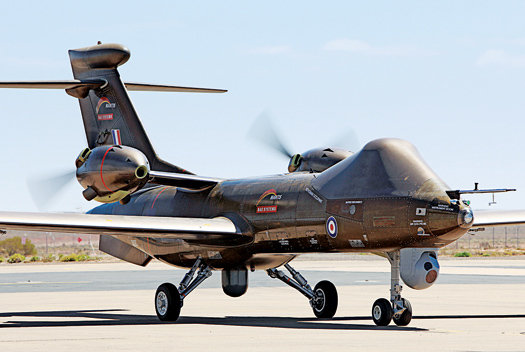The newest Air Force reconnaissance airplane is unmanned and hypersonic. It is called Falcon/Blackswift and is the subject of considerable speculation. This platform will set the stage for the transformation of military aircraft to unmanned for all future fighters and bombers. Even the F 22 has capabilities that a human pilot cannot tolerate. This interview has a few points not usually discussed about this aircraft.
Several cockpit characteristics make the F-22 a departure from existing cockpit designs. The Raptor receives numerous inputs from its own or ‘onboard’ sensors as well as data from sources outside the aircraft (offboard sensors). Current fighters use the pilot as the sensor systems operator to point or cue various systems and sensors to acquire data. The pilot must then become the data analyst to sort through these sensor inputs and determine what it all means. The F-22 pilot is neither a sensor operator nor data analyst.
What this means is that all data is processed on board and can be as easily accessed from a remote site.
As an example, the F-15 pilot can overstress or over-G his airplane, particularly in the transonic region. As a result, the Eagle pilot must constantly be alert to rapid aft stick inputs as he accelerates in a fight. One careless input in an air-to-air fight and you can overstress the Eagle. It has been done and continues to be a problem. As a result, the Eagle driver cannot be quite as aggressive with his flying at all times for fear of over-G. The F-16 pilot is a little better off but his flight control system does not protect him from over-G while rolling so he must also temper his aggressiveness in a fight. The F-22 pilot has no such concerns. Aside from diving the airplane directly into the ground, the Raptor pilot can ‘yank and bank’ to his heart’s content without fear of over-G, loss of control or otherwise ‘hurting’ the jet. This makes for one aggressive fighter pilot in a fight and makes the F-22 a lethal opponent.
This statement may be a bit misleading. My information is that the airframe is capable of greater G forces than the pilot can tolerate but it is flown within the “envelope” determined by the pilot, not the airframe. This allows the possibility of greater performance when a pilot is not aboard.
The Aurora project was the next step after the SR 71. It has never been formally acknowledged but may have now been superseded by the new unmanned aircraft.
I have previously posted an incident in which my brother-in-law, a former Marine fighter pilot, was talking to another parent at their kids soccer game. The other man was an Air Force officer who, after the game, went to work at Davis-Monthan Air Force Base in Tucson where he would spend the next 12 hours flying a Predator UAV over Iraq. The most recent Michael Yon column from Iraq tells the other end of that story.
The bombers were being watched. Invisible to them, prowling far overhead, was a Predator.
The Predator is an unmanned aerial vehicle (UAV) whose eye sees through the darkness. The night sky is the jungle where it hides. The Predator strikes with more suddenness and force than any tiger. I often watch the live feed streaming down into the Tactical Operations Centers (TOC) around Iraq, while crosshairs track the enemy, and the screen lists data such as altitude, azimuth, ground speed, and the precise grid coordinates of the target.
The future is coming very fast. Manned military aircraft, especially fighters and bombers, may be a thing of the past. Not now, but soon.

